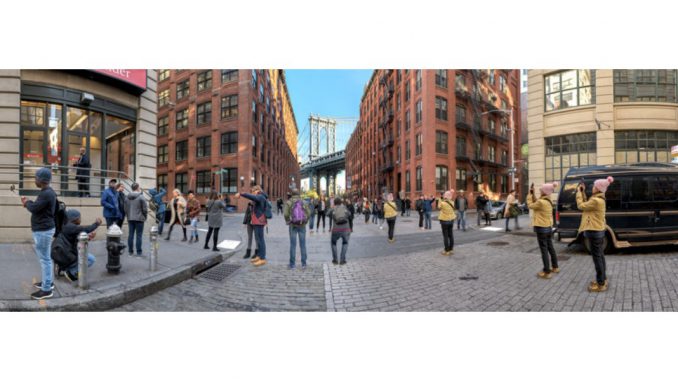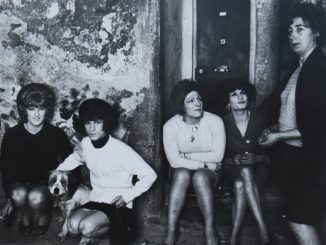
Landscape is a major part of photography. Kutz reappropriates it in his shots and narrative montages. The very name of the series – “Cultural Landscapes” – comes from geography.
Otto Schlüter introduced it to Germany in 1908. It was later taken up again by another (American) geographer Carl O. Sauer to define how many traces exist in every landscape that are not only those of nature but of the link that unites a viewer with his time.
Any physical representation of the landscape is indeed induced by human modifications and what an ambient or official culture retains of it (“Murder in an English Garden” by Peter Gtreenaway already underlined this).
So much so that very quickly the theorists of various fields have retained in all landscapes the anthropomorphic aspects by proving that nature disappears there.
And this more than ever in the Anthroposcène that Kutz offers – especially in his great panoptics. The artist announces the future obsolecence of the world, but in an original way that is more playful than catastrophic. The photographer shows how the world is transformed in his “mirror” and the narratives they reflect far from the rustle of elves.
The photographer is not content to give “real” but illustrates how it extends into a coexistence between what is and what is not yet. In his own way David Kutz, coming out of the American schools of landscape, changes focus. He offers places that are recognizable but that become non-places in what becomes, to quote Marc Augé, an “anthropology of supermodernity”.
Straddling between the real and the virtual, between the existing and what is about to disappear before a kind of precipitation into chaos, Kutz still believes in beauty to save our world. He grasps it in its banality but according to a particular position in the history of humanity and its iconic landmarks. An emotion spreads in this kind of quasi-science fiction but where imaginary beings are replaced by the poor actors – or consenting victims – that we are.




Be the first to comment